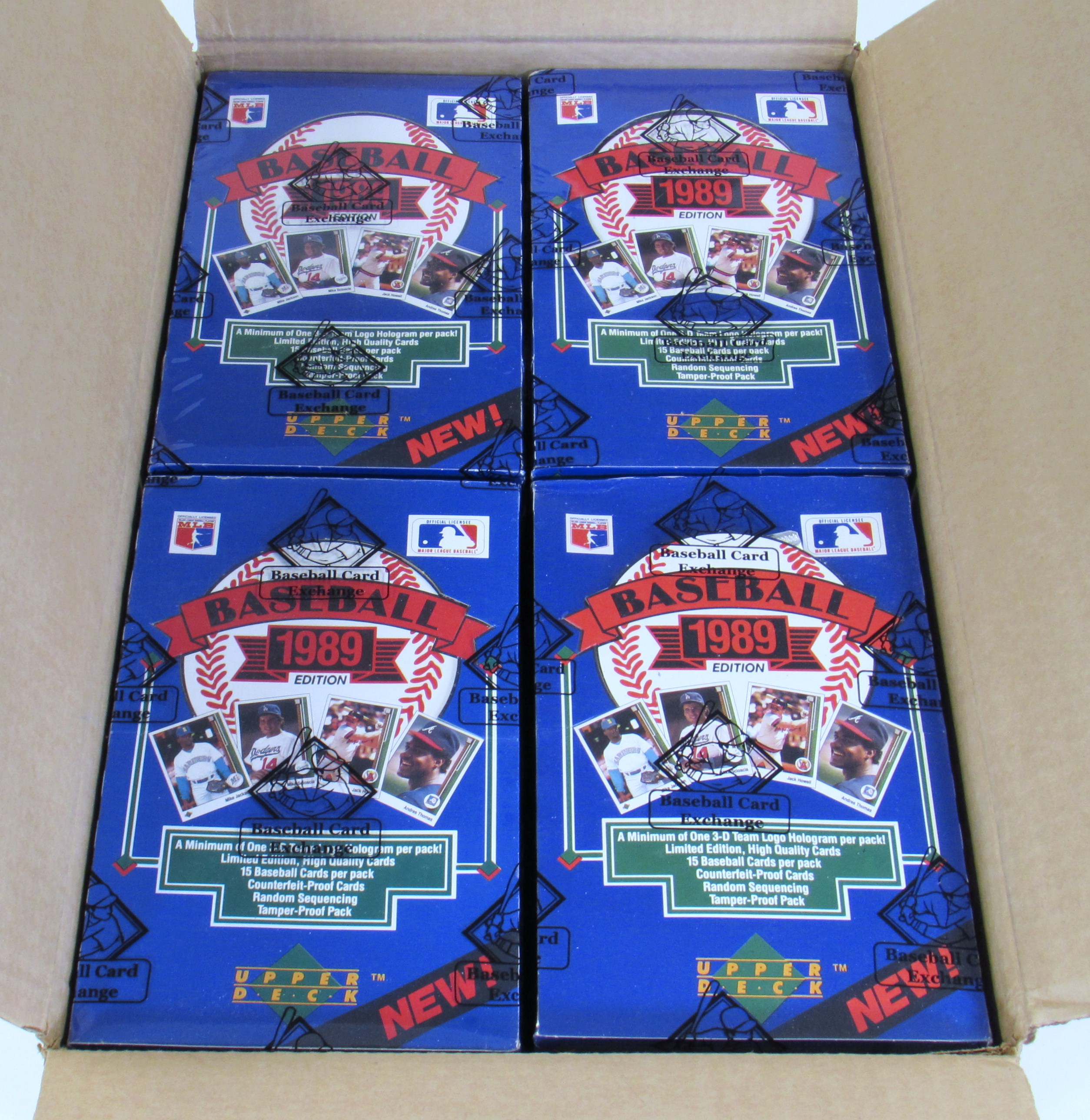Upper Deck

As I spent some time sorting recently, it came time to sort through my Upper Deck stacks. This brought a lot of memories to the forefront.
It was 1989, and 12 year old me discovered this new set. Sixth-grade me was really discovering cards. It had been 2 or 3 years of serious collecting for me, and sixth grade brought a lot of new friends who loved cards as much as I did. We knew Topps well, in addition to Donruss and Fleer. 1988 also saw the addition of Score to the mix.
But Upper Deck was something all new - and it was amazing.
Topps, Donruss and Fleer were cardboard treasures. But Score tried to up the game. Thicker, stronger card stock and pictures on the front and back were new and welcome.
But what Score tried to accomplish, Upper Deck excelled in. It was thick card stock and there were pictures on front and back. Glossy cards weren't familiar outside of those KMart, Kaybee or other small sets you'd pick up for $1.99. Upper Deck was nearly there.
Middle school me was enamored by Upper Deck, but middle school me also struggled with Upper Deck. Cards were approximately 50 cents a pack in the late 1980s. Upper Deck cost a couple bucks a pop. With $5 allowance, that meant two packs per week. I was getting 8 or 9 packs of Topps, Donruss and Fleer, but those Upper Deck were so cool.
As I sorted, I realized the Upper Deck piles were so much smaller than my Topps, Donruss and Fleer piles. The Upper Deck pile was on par with Bowman, but I'll admit I bought too many of those in 2018.
Here's a look at why I love Upper Deck so much:
The card stock

Having picked up collecting in 1986, I was accustomed to cardboard. My cards were on that flimsy cardboard that came in a wax pack with a piece of gum. Topps was my favorite, and admittedly its quality was not on par with Upper Deck.
Upper Deck cards were thick and not easy to bend. They stayed relatively flat unless you really tried to bend them. You didn't get a card that had that sticky gum residue on it. There wasn't glue from the wax pack wrapped around it.
The pictures
Other card companies had really grown in their pictures, Upper Deck really seemed to go another level. Upper Deck had the usual mix of pictures: face shots, candids and action shots. But adding a picture to the back made it that much more exciting.
That brings me to ...
The backs

The backs of Upper Deck cards were amazing to 12-year-old me. Upper Deck really went above and beyond in its design. The pictures on the back varied, but some really made for a great look. Some showed guys doing goofy things like spraying Cubs fans with a hose in the Wrigley Field bleachers. Some showed candid shots of veterans talking to rookies or players talking with coaches. As a former sports editor, I appreciate pictures like these, and I'm sure card designers were longing for ways to use some of these pics.
The color and glossy design made the backs look impressive and eye-catching. The backs really popped and made Upper Deck an appealing card on both sides.
The excitement

The Ken Griffey Jr. rookie in 1989 is, to this day, a want-list card for many. It still holds its value and is probably the most sought-after junk wax card. But Upper Deck's excitement went way beyond that. It was new, but we'd been down that road. Score was new in 1988, and it drew some attention. But it was nothing like Upper Deck. The new shiny, white, sturdy cards were all the rage in my middle school - as well as many others, I am sure. Everyone was talking about them. My card-collecting friends and I desperately wanted more than our meager wallets could bring in.
This new card was everything we had been longing for, and we wanted it. So we continued collecting in into the 1990s - and when Upper Deck released football and basketball cards, I wanted all those as well. I even bought some hockey cards - and I really wasn't a hockey fan at the time.
Thank you, Upper Deck

We owe a lot to Upper Deck. While Topps has the only MLB license, there are still other brands releasing cards. But all of these are superior products to what we had in the '80s. I attribute this to Upper Deck.
Card companies were abundant in the early '90s, and they needed ways to stand out. Topps was the longstanding brand, so it had no issue. Fleer and Donruss had been around since 1981, so they had a following. Bowman was picking up steam thanks to its Topps backing. Score did well - but I attribute this mostly to its pricepoint. Others like Classic or Pacific tried, but they weren't picking up any steam.
But Upper Deck made everyone up their game. Upper Deck came out and said, "Here's a great product. It may cost more, but we know you want it." And did we want it.
Upper Deck proved that it was possible to charge more for cards if the quality was there. Upper Deck didn't want cheap cardboard, it wanted something strong that would hold up. Upper Deck wanted to make cards visually appealing and desirable. Upper Deck wanted cards to be something that didn't belong in a shoebox but belonged on display.
Sound familiar?
Today's cards are durable. Today's cards are visually appealing. They are desirable. They are something that you want to put on display - and we're all willing to pay a little bit more for them. In my mind, Upper Deck helped cards take that next step. Upper Deck made collectors desire more than just cardboard.
Two years after Upper Deck debuted, Topps released its first Stadium Club set. Glossy cards, better pictures and stronger, more durable cards. They got the hint, and they rolled with it - even surpassed the Upper Deck model.
Thank you, Upper Deck, for making cards what they are today.


Comments
Post a Comment